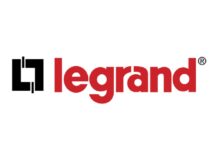It is well to be noted that Hospital pharmacists go on to play a critical role when it comes to the procurement, storage, handling, as well as transportation of vaccines when it comes to healthcare system settings, thereby responding to the unique nature as well as requirements in order to secure cold chain management across the overall supply chain. Partnership with all supply chain stakeholders is required to assure a dependable path for vaccines from the production point to the point of administration. Furthermore, advancing cold chain management happens to be necessary so as to assure the integrity of the cold chain and also go on to offer an environment in which temperature control standards may be followed without fail, which thereby enables the use of vaccines in a safe as well as an effective manner.
The vaccine’s effectiveness depends on the cold chain
All across the COVID-19 pandemic, the topic of vaccination has gone to receive a lot of attention. For the European Association of Hospital Pharmacists- EAHP as well as its full members that are spread across 35 different European countries, the usage of vaccines has always been major when it comes to protecting the health of patients, hospital pharmacists along with other healthcare professionals, and citizens. Like any medicine, vaccines happen to have benefits and risks as well. Although highly effective, no vaccine is always 100% effective when it comes to safeguarding disease or 100% safe for all vaccinated people. Effectiveness within an individual completely depends on numerous factors, such as age, other diseases, or even conditions that an individual might as well have, like allergies or previous contact with disease. Apart from this, the effectiveness of vaccines also goes on to depend, on how properly their integrity is maintained all across the cold chain. Failure to handle as well as store vaccines properly can decrease their potency, thereby resulting in inadequate immune responses within patients and poor protection when it comes to disease, all implying that hospital pharmacists, along with their colleagues in the multidisciplinary healthcare team, happen to avoid them at all costs.
The manufacturing processes of vaccines: Issues
Issues when it comes to securing the cold chain start within the manufacturing processes of vaccines, where time delays in processing as well as packing may go on to vary and also pose a risk to vaccines’ integrity. By way of following manufacturing guidelines, stakeholders who happen to be involved in the transport as well as distribution of vaccines must go on to assure that the cold chain happens to be ceaseless, in spite of numerous transportation segments. If carried out in an improper way, loading and unloading of vaccines, along with environmental temperature variations, thereby lead to vaccine degradation. Moreover, improper placement of sensors on the transportation boxes and inappropriate tracking push temperature control and also additionally speed up a loss of vaccine potency. When sent to a healthcare setting, handling along with storing vaccines represent a couple of major challenges when it comes to securing the cold chain. Depending on how the vaccines happen to be placed in the refrigerator, a barrier to cool airflow may go on to occur because of freezer overcrowding, thereby leading to a lack of sufficient as well as constant cooling of the vaccines. Moreover, environmental settings bear further risks to vaccines’ integrity if in case ambient high- or low-temperature conditions go on to affect temperatures that are obtained within the cold chain. Hence, robust storage along with inventory management processes are of significance so as to decrease temperature fluctuation risks.
Making sure of the effectiveness of vaccines
To lessen the risks and to also ensure effectiveness when it comes to vaccines, storage and transport have to be carried out in sync with the recommendations of the manufacturer. Varied types of vaccines exist, which means not all the storage and transport conditions happen to be alike. Vaccines that happen to be sensitive to freezing must be kept at temperatures that range between 2°C and 8°C. Those that go on to contain viral and/or lyophilized strains can also be stored at temperatures between -15°C and -25°C. It is well to be noted that mRNA that has gone on to be developed by some manufacturers against COVID has been needed in the past even at lower temperatures. In cases of wrong storage or even incorrect handling of the vaccine, steps have to be taken. The involvement of healthcare professionals happens to be crucial since they are trained when it comes to the processing of vaccines. Most generic errors are storing vials loosely or not respecting the laid instructions. Hospital pharmacists can enable with preventing such errors by storing each vaccine type or diluent in its original packaging form in a separate container. Other operations that they carry out go on to cover the daily tracking of storage equipment so as to identify temperature shifts quickly and to guarantee the viability of vaccine supply along with the safety of patients.
It is worth noting that one of the first steps when it comes to detecting potential temperature variations that may go on to affect the intended efficiency of vaccines happens to be carrying out the risk evaluation that gets identified across all stages of the supply chain, which also includes storing after manufacturing, sales as well as procurement, transport, along with finally storage and usage in a healthcare facility. These risks may be traced by way of process analysis, like failure mode and the highest potential for a failure to take place, thereby influencing vaccine stability and integrity. The fact is that detected risks must be proactively considered in a wider framework of quality control as well as management in a healthcare setting, in addition to the retrospective overview of previously identified risks in terms of handling vaccines within the cold chain. When detected, reducing, controlling, and lessening the risks happen to become priorities. This can be attained by setting up processes that are based on standard operating procedures as well as protocols, and also through additional training and education on how to track temperature, conduct accurate inventory management, and respond to temperature deviations that may lead to patients not receiving their vaccines or getting administered fewer effective vaccines.
Interestingly, healthcare facilities ought to have a plan on how regularly the temperature should be monitored, thereby avoiding unnecessary freezing of vaccines that should not be frozen or exposing them to high temperatures. The most exact temperature tracking gets done by way of digital data logger technology, which goes on to store and record temperature electronic readings right from a refrigerator or cold room across the entire cold chain.
It is worth noting that reviewing temperature records is also significant so as to record trends and deviations and also detect failures on time. Good logistics are not just required all across the transport process but even at the point of administration. Apart from this, they are relevant for record-keeping as well as tracking vaccines and are important for coordinating re-vaccination intervals. Data collection, which goes on to link persons receiving vaccines with the data on the dose and the vaccine type, is critical when it comes to tracking pharmacovigilance as well as adherence, as well as other purposes like batch-level registration for side effects tracking and also re-calls. Databases that go on to store this kind of information should go ahead and interlink with the existing systems that are used in hospitals and in community settings. Vaccination records must be an integral part when it comes to medication records, so they can be made use of throughout the healthcare system. The record-keeping process can be facilitated by the use of scannable codes on the primary packaging. This is particularly indispensable for mass vaccination campaigns, during which many vaccine doses are administered to different groups of individuals within a vaccination center or another location handling the vaccination process. Tracking which person goes on to receive which vaccine happens to be pivotal for the COVID-19 vaccination campaigns as it is a different product, and in some cases, the second dose administration is used all across Europe. As a matter of fact, for two-dose vaccines, good logistics are indeed essential to streamline invitation messaging to the vaccine recipients and also the arrangements at the distribution points.
Issues with preserving the cold chain still take place
Across the last three years of the worldwide pandemic, healthcare systems throughout the world suffered and simultaneously received important investments that are dedicated to safeguarding cold chain infrastructure. On the other hand, the pharmaceutical sector and wholesalers worked on enhancing the stability, transportation, storage, and handling of vaccines. Nonetheless, it seems that a combined approach across all stakeholders involved in the vaccine supply chain happens to be missing, as issues when it comes to preserving the cold chain as it is still occurring. One of the possibilities so as to address these issues is to make use of available advanced technology fully integrated into healthcare system tracking processes. Tracking temperature shifts that are well recorded, transparent, and available to all interested parties will grow trust and confidence among stakeholders and also allow for more advanced data analysis, which may as well facilitate future temperature fluctuation prediction. Hospital pharmacists happen to be in a unique position in order to bring expertise as well as leadership when it comes to cold chain management, reducing risk to patients as well as healthcare systems that originate from vaccine mishandling.
















